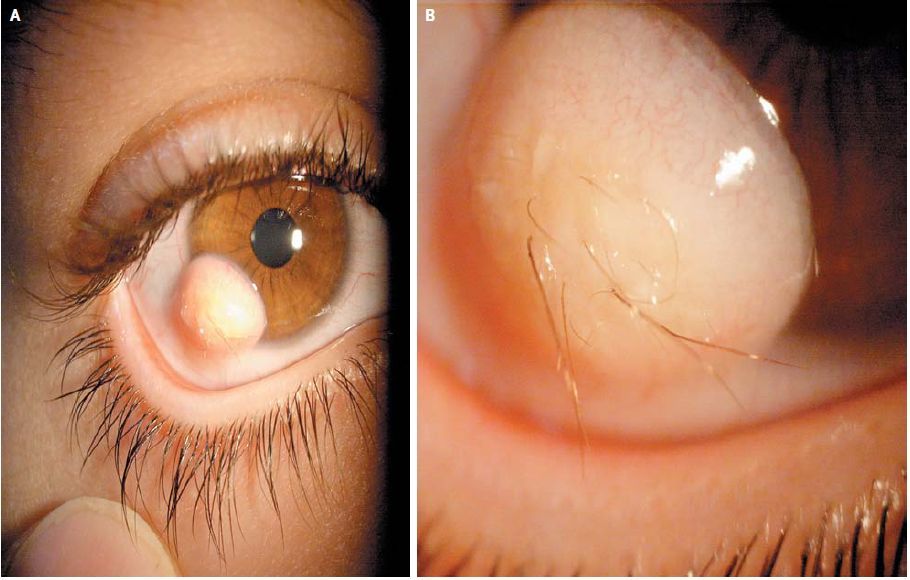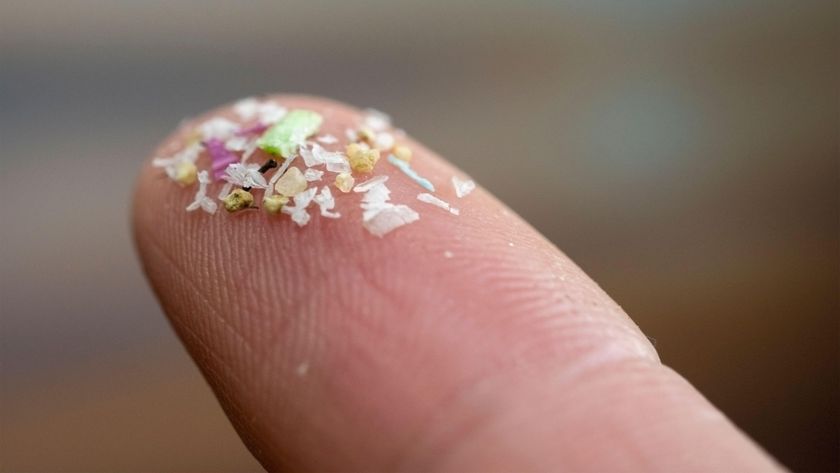'Hairy Eyeball' Caused by Rare Tumor

A rare tumor in a 19-year old man caused hair to grow on his eyeball, researchers report.
The tumor, called a limbal dermoid, was benign and had been present since birth. It gradually grew in size until it was about 5 mm in diameter (a little less than a quarter of an inch), and sprouted several black hairs, said the researchers from Tabriz University of Medical Sciences in Iran.
Limbal dermoids are uncommon — an eye doctor may see just one or two cases during his career, said Dr. Mark Fromer, director of Fromer Eye Centers in New York City and an ophthalmologist at Lenox Hill Hospital, who is not involved in the Iranian man's care. These tumors contain tissue normally found in another part of the body. Most frequently, limbal dermoids contain hair follicles, but they can also contain other tissues, including cartilage and sweat glands, Fromer said.
These tumors can cause astigmatism (blurred vision), but usually don't cause dramatic vision problems, Fromer said. That's because they typically do not cover the center of the cornea, an important part of the eye for vision, he said.
Limbal dermoids can be removed for cosmetic reasons, but their removal typically doesn’t change patients' eyesight, Fromer said.
Fromer currently has a female patient with a limbal dermoid that contains hairs, but she does not want it removed. "It hasn’t grown or changed and it doesn't physically bother her," Former said.
The Iranian man had mild discomfort and vision loss in the eye with the tumor, and it was removed with surgery.
Sign up for the Live Science daily newsletter now
Get the world’s most fascinating discoveries delivered straight to your inbox.
The case report is published today (Jan. 2) in the New England Journal of Medicine.
Pass it on: A rare type of tumor can cause hair or other tissue to grow on the eye.
Follow Rachael Rettner on Twitter @RachaelRettner, or MyHealthNewsDaily @MyHealth_MHND. We're also on Facebook & Google+.

Rachael is a Live Science contributor, and was a former channel editor and senior writer for Live Science between 2010 and 2022. She has a master's degree in journalism from New York University's Science, Health and Environmental Reporting Program. She also holds a B.S. in molecular biology and an M.S. in biology from the University of California, San Diego. Her work has appeared in Scienceline, The Washington Post and Scientific American.
Most Popular




